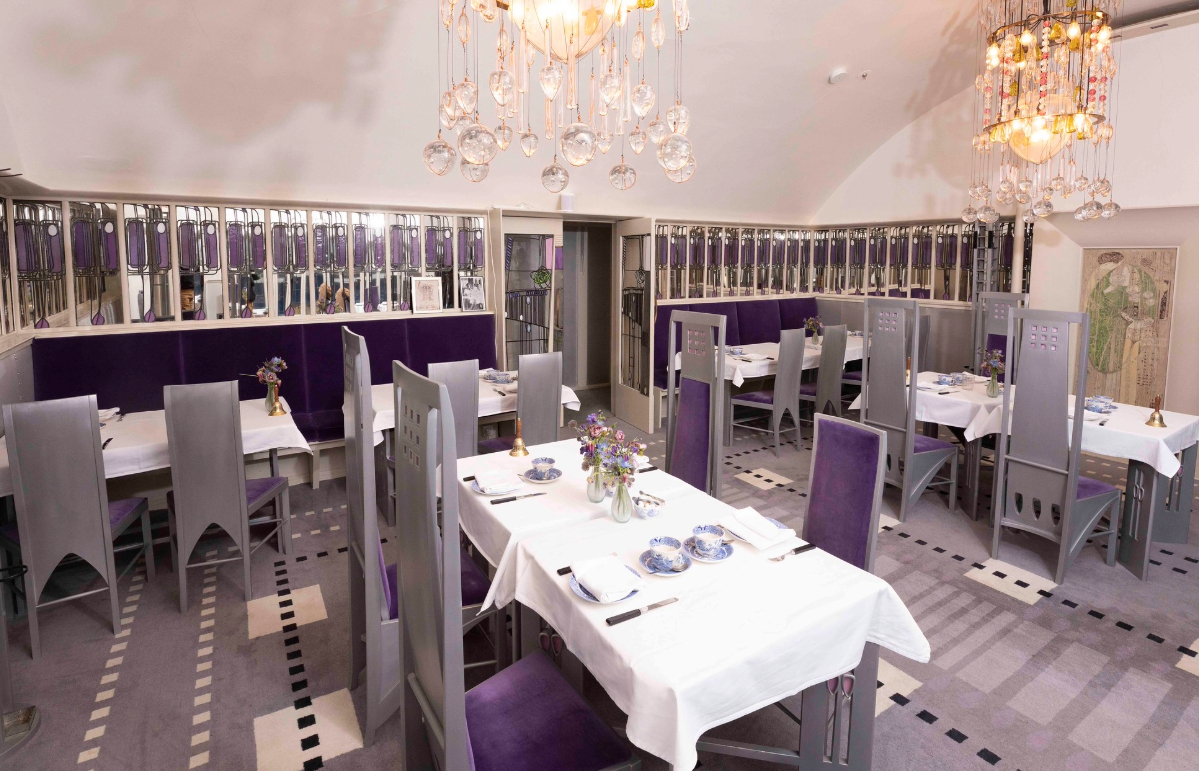Famous tea rooms in Glasgow designed by Charles Rennie Mackintosh have been rescued from closure after being taken over by the National Trust for Scotland (NTS).
Mackintosh at the Willow, which was reopened five years ago after a £10m restoration, has now been made a heritage property.
It comes after its future faced uncertainty after being threatened by “difficult trading conditions”.
The conservation charity said that the tea rooms had now found a “safe haven” with the Trust.
The intervention, which was made at the Willow Tea Rooms’ request, has secured the “important and original” architecture work by the Scottish architect and designer and saved a number of jobs.
The Trust said it was using £1.75m of its reserves and acquisition funds to address the immediate financial challenges and keep the business trading.
Phil Long OBE, NTS chief executive, said: “Mackintosh is one of the greatest architects of the 20th-century, respected internationally for his breathtaking and innovative design.
“People from around the world travel to Scotland to see his and his wife Margaret Macdonald’s brilliant work together. As the custodians of one of Mackintosh’s other rare masterpieces, the Hill House (on which Macdonald also collaborated), we see the acquisition of Mackintosh at the Willow as a perfect fit.

“The brilliant restoration by The Willow Tea Rooms Trust with the support of The National Lottery Heritage Fund and many others gifted back to the nation an exceptional example of architectural heritage that we are proud to bring into our care.
“Despite difficulties that were outwith the control of the Willow Tea Rooms trustees and the management team, the work they have done with their staff in welcoming visitors, running community learning and outreach and in providing an exceptional heritage experience is exemplary – and we are certain we can build on their achievements to ensure the long-term sustainability and survival of this wonderful place on behalf of Glasgow and Scotland.”
The Trust said that while the tea rooms’ “underlying business model being sound”, the cumulative impacts of the disruption caused to Sauchiehall Street by the second fire at the Glasgow School of Art and the Covid pandemic had adversely affected the tea rooms’ income.
Despite this, the tea rooms have in the last year attracted over 230,000 visitors.
The original 1903 Willow Tea Rooms were designed entirely by Mackintosh who had total control inside and out.
It is the last remaining original of the several tea rooms designed by Mackintosh working with his wife Margaret Macdonald, for entrepreneur Kate Cranston.
The tea rooms were purchased, saved and restored by Glasgow businesswoman Celia Sinclair Thornqvist MBE and The Willow Tea Rooms Trust between 2014 and 2018 and are cited worldwide in architectural histories as one of Glasgow’s most important contributions towards modernism.
Ms Thornqvist MBE, founder, past chair and trustee of the Willow Tea Rooms Trust said: “From the beginning, it was our aim to restore and conserve this last remaining and most beautiful example of Mackintosh’s masterful designs for tea rooms to the highest possible standards.
“Through this new partnership, I am delighted and relieved that a way has been found to sustain this global icon in Glasgow and Scotland, so that it can continue to be protected and shared.”
Mackintosh at the Willow will formally become one of the NTS properties with effect from January 19.
Members of the Trust will be able to enjoy access to the property’s exhibition for free from January 12.
Follow STV News on WhatsApp
Scan the QR code on your mobile device for all the latest news from around the country





























